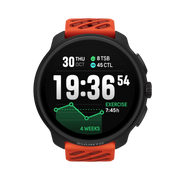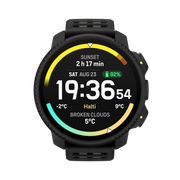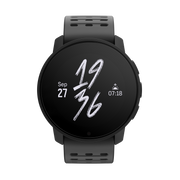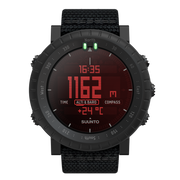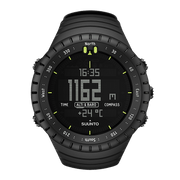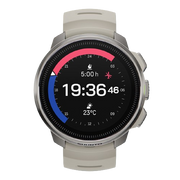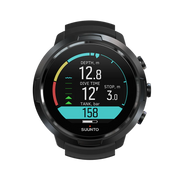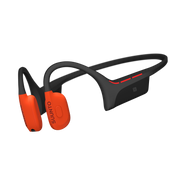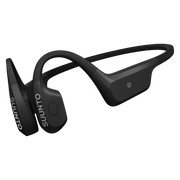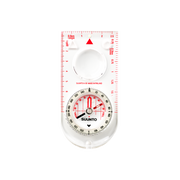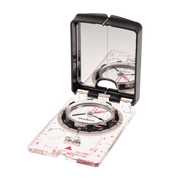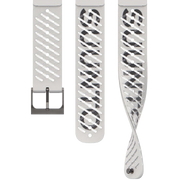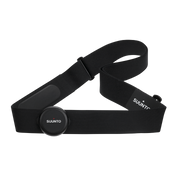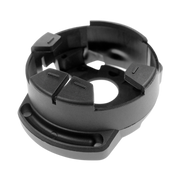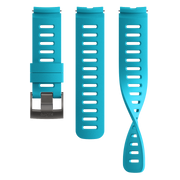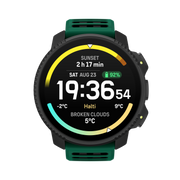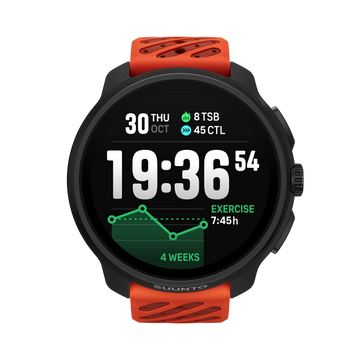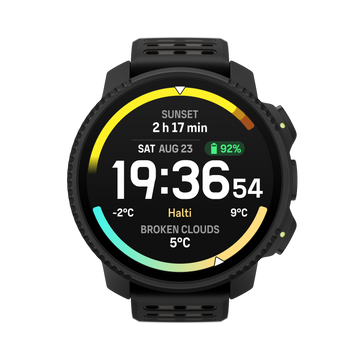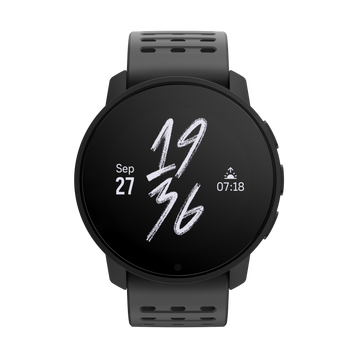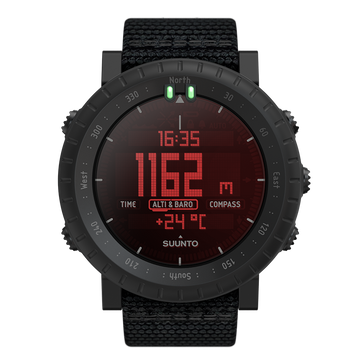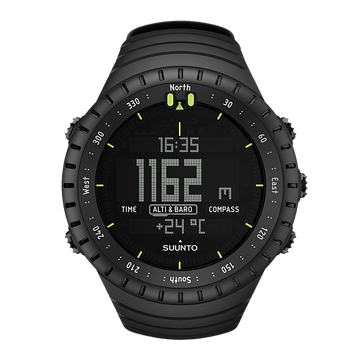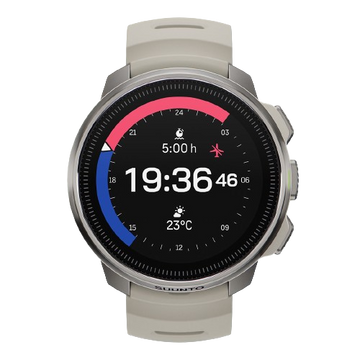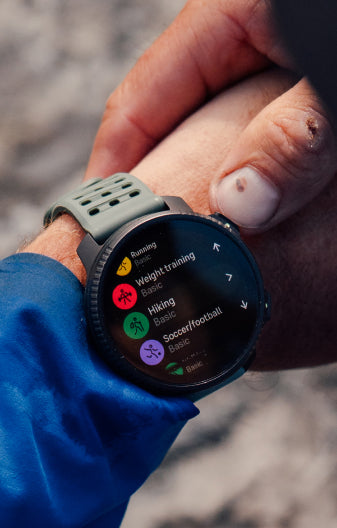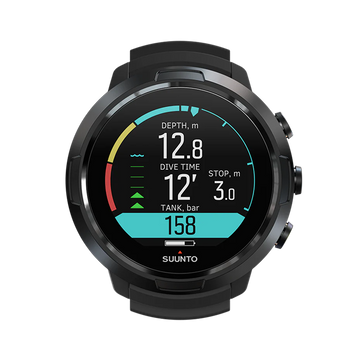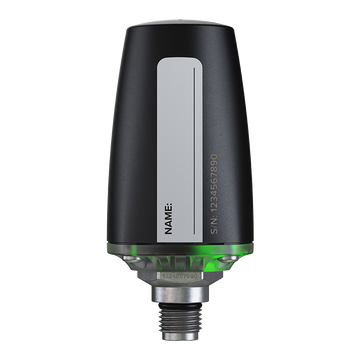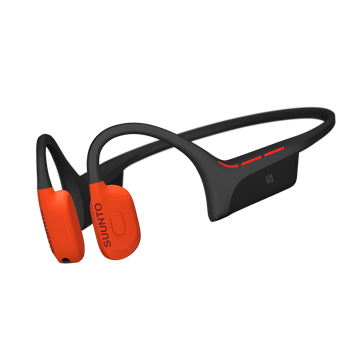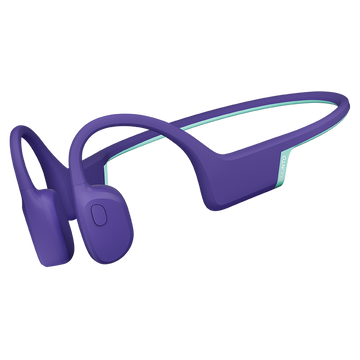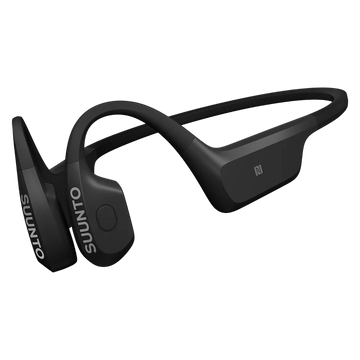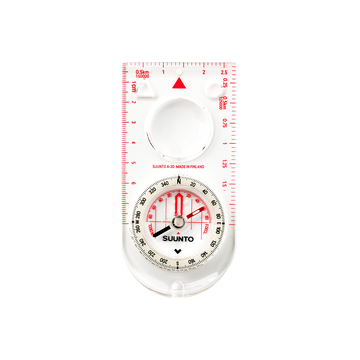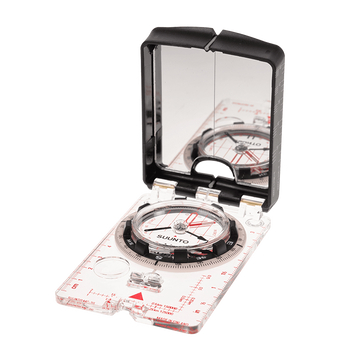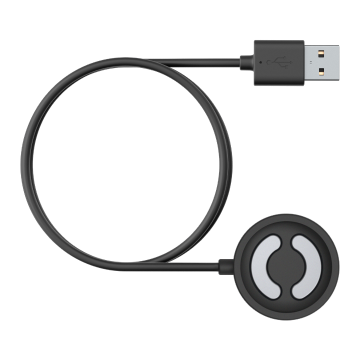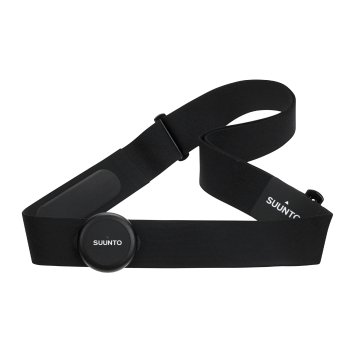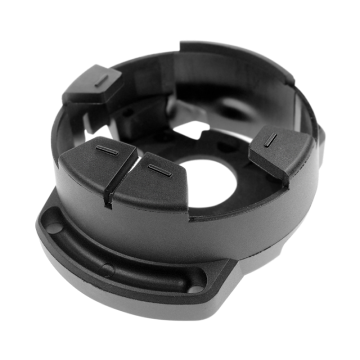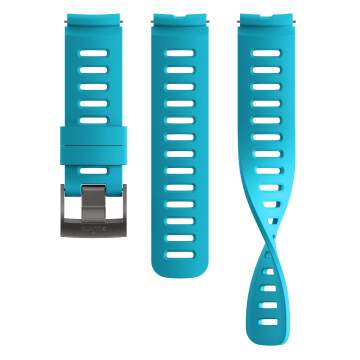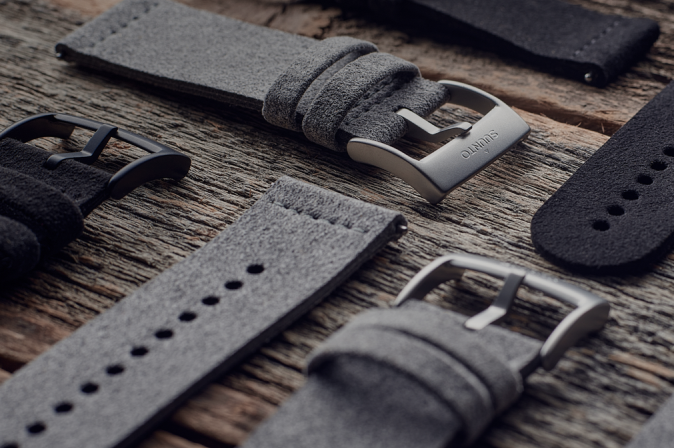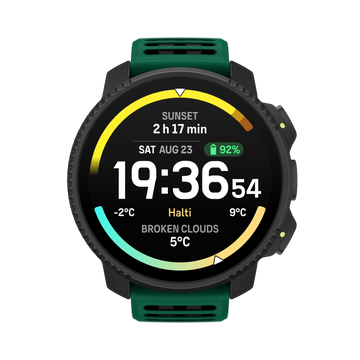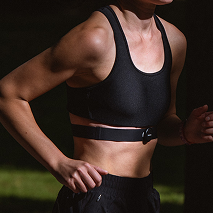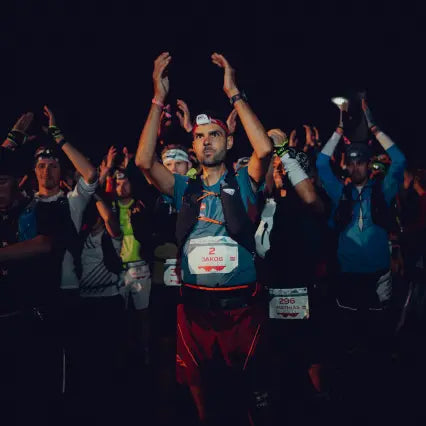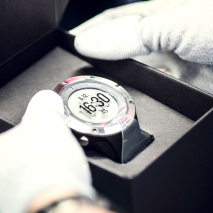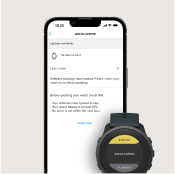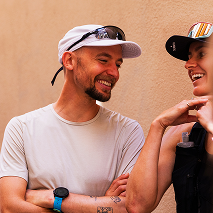

Suunto Blog

Trail Alsace Grand Est by UTMB
The trail running season has started and we are happy to attend the Trail Alsace Grand Est by UTMB, May 15 to 18.
We are ready, and you?
Last year's edition brought together 6,000 runners from 60 nationalities, who uncovered a landscape rich in historical and cultural Alsatian heritage. Competitors experienced a spectacular start with medieval flair, accompanied by the gallop of knights in armor. This dramatic beginning set the stage for an unforgettable journey, including stops at many fortified castles such as the Château du Haut-Koenigsbourg, the picturesque towns of Turckheim and Kaysersberg, and the scenic beauty of the famous Alsatian vineyards. Each step revealed a new layer of the region's remarkable history and breathtaking scenery.
Suunto will be present at the race village with a booth, where our team will be happy to share the latest brand news, showcase our products, and support you before your race.
But that's not all—take part in the COMMUNITY RUN, in collaboration with PWRUP. Experience the thrill of running 6 km through the stunning hills of Obernai and relax afterward with a snack to refuel.
Community Run – Friday, May 16🕑 14:00 – Departure from the Suunto booth🏃 6 km route through the hills of Obernai🕒 ~15:00 – Return to Suunto booth🍫 Post-run snack with Näak products and soft drinks Register now and book a unique opportunity to test one of our sports watches during the run!
👉 REGISTER!
Can’t join the community run but still want to try a watch? No problem—just stop by our booth and ask to borrow one for 1 hour, 2 hours, or more. Our team will find a solution for you!

Recovery and Rest: The Key to Optimising Your Scuba Diving Performance
When it comes to maximising your diving performance, recovery is just as important as training.
Every training session pushes your body out of balance, disrupting homeostasis and temporarily lowering performance. With proper recovery, your body not only returns to baseline but adapts and improves, increasing your stamina and strength over time. Understanding how recovery works and learning how to track it can help you train smarter, dive better, and stay energised for repetitive diving and the adventures ahead.
The Role of Sleep in Recovery
Sleep is your body’s most powerful recovery tool. During deep sleep, the body releases growth hormones that repair tissues, restore energy, and support immune function. It’s when your system resets physically and mentally. Quality sleep is the foundation of recovery, performance, and overall well-being. By understanding your sleep patterns, you can better gauge your readiness for your next dive or workout and perhaps adjust accordingly.
With Suunto Ocean, tracking your sleep is effortless; just wear your watch to bed, and it does the rest. Each morning, you’ll receive a sleep summary: total sleep time, estimated time awake, and periods of deep sleep. Over time, these nightly snapshots evolve into trends and you will see a bigger picture of how well you're resting and recovering.
To view your sleep trend, swipe up from the watch face to open the Sleep widget. You’ll see your most recent sleep at a glance, along with a rolling 7-day graph that helps you recognise patterns whether you're consistently well-rested or starting to fall behind.
Tracking your sleep consistency is just as important as tracking duration. Regular sleep and wake times help support your body’s natural rhythm, making recovery more effective and energy levels more stable.
For deeper insight track your HRV during sleep to better help you understand how your body responds to training, stress, and environment, even while you rest. Read more about how to use HRV to optimize recovery.
Sleep isn’t just downtime it’s your body’s chance to reset, repair, and prepare. And now, with Suunto, it’s something you can understand better than ever.
Using HRV to Optimize Your Training
The Suunto Ocean tracks over 95 activity types, including diving, swimming, strength training, and more. Combined with HRV insights, it shows you when it’s time to push forward or pull back, ensuring a sustainable training rhythm that supports long-term performance.
HRV measures the tiny fluctuations in time between your heartbeats. It's one of the most reliable indicators of recovery and nervous system balance. A high HRV often signals that you are well rested and ready to perform. HRV isn't just a stat it’s a decision-making tool. By keeping an eye on it daily, you can tailor your training intensity, prevent overtraining, and improve overall resilience.
High HRV: Your system is adaptable and recovered. Green light for more intensity.
Low HRV: Your body is still under stress. Time to scale back or rest.Suunto Ocean monitors your HRV during sleep and after workouts, offering key insights into how your body is responding to stress and recovery.
Balancing Stress and Recovery
Peak performance comes from balance. The Suunto Ocean helps you understand your training load versus your recovery status. If your load is high and recovery is low, that’s your cue to rest before fatigue turns into burnout or injury. Technology is powerful, but your body’s signals are just as important. If you're feeling unusually sore, fatigued, or mentally drained, listen to those cues. Use the Suunto Ocean as a guide, but always tune into how you feel after your dive or your workout. Your body knows when it needs rest, and you just need to listen.
Conclusion: Rest Smarter, Dive Stronger
Recovery isn’t downtime it’s a performance tool. With the Suunto Ocean, you gain access to powerful recovery metrics like HRV, sleep quality, and training load all in one device. Prioritize rest, train with intention, and give your body what it needs to reach new depths. Because the better you recover, the better you dive.

How to Find Your Training Zones and Supercharge Your Scuba Diving Fitness
Training intensity plays a crucial role in preparing for scuba diving. It’s not just about hitting the gym or logging endless cardio, but finding the right workout intensity is the key to getting the best results, whether you want to improve your diving fitness, breath hold or boost your endurance.
What Are Training Zones?
Training zones are intensity levels that help you follow a training plan and reach progress. Each zone targets different physiological systems, helping you build the endurance, power, and control you need for scuba diving. Here’s a breakdown of the most important zones for divers:
Zone 1 – Recovery
Used for warm-ups and active recovery. It promotes blood flow, aids in muscle repair, and helps ensure you’re not overtraining before a dive. Exercising in zone 1 is relatively easy on your body. When it comes to fitness training, intensity this low is significant mainly in restorative training and improving your basic fitness when you are just beginning to exercise, or after a long break. Every day exercises like walking, climbing stairs, and cycling to work are usually performed within this intensity zone.
Zone 2 – Endurance
This is your base-building zone. It improves aerobic efficiency and stamina, perfect to prepare you for long dives or extended underwater activity. Exercising at this intensity feels easy, but workouts with a long duration can have a very high training effect. The majority of cardiovascular conditioning training should be performed within this zone. Long duration workouts in this zone consume a lot of energy, especially from your body’s stored fat. Think steady swims or long-distance walking.
Zone 3 – Tempo / Steady Effort
Exercising in zone 3 begins to be quite energetic and feels pretty hard going. It will improve your ability to move quickly and economically, ideal for when you want to improve your finning, buoyancy control, and dive longer dives. This zone boosts moderate-intensity endurance that you rely on for continuous underwater movement.
Zone 4 – High Intensity
This is where power is built and limits are tested. Training in Zone 4 pushes your anaerobic system, improving your ability to perform in high-stress, physically demanding situations like hauling gear or responding to emergencies underwater.
It’s fast, hard, and effective: a zone that rapidly boosts performance and resilience. But it’s not for every day, as too much intensity without recovery can lead to burnout or injury. Use it wisely, and Zone 4 becomes your edge when the pressure’s on.
Zone 5 – Maximum Effort
This is your redline, the zone of short, explosive bursts where you're pushing at full capacity. Training here targets your VO₂ max and anaerobic threshold, sharpening your body’s ability to respond quickly and powerfully under pressure, giving an edge in critical dive scenarios.
Zone 5 efforts are intense and brief, lasting only minutes. They demand full focus and come with a high recovery cost, which is why elite athletes use them sparingly and strategically. For most fitness enthusiasts, this zone is optional as they are not required, but if you are chasing peak performance, include maximum-intensity workouts in your training program.
How to Calculate and find your heart rate zones
It is important to know your zones to be able to follow a training plan and to keep structure in your training. Use the classic formula (220 – your age) to estimate your max heart rate. You can build your zones off this baseline, but refine it as you get more experience. Once you know your zones, you can focus on gradual progression, tailoring each session to meet your diving goals.
The Suunto Ocean makes zone-based training easy. Use its built-in heart rate monitor and analytics to track how your body is responding to each workout. Start with a basic estimate, then refine as you go with data from your training sessions or tests. Suunto’s tools help you track it all so your training stays intentional, efficient, and aligned with your underwater ambitions.
Why Zone-Based Training Matters for Divers
Each zone develops different capabilities from long-haul endurance to explosive power. By mixing the right training intensity with purpose, you’ll condition your body for more efficient movement, better recovery, and improved control underwater. As Suunto expert Janne Kallio says:
“Training doesn’t need to be complicated.”

Over 50 events, 1 passion: Your guide to the 2025 UTMB World Series
The 2025 UTMB World Series is more exciting than ever with new destinations, the legendary challenges, and Suunto supporting athletes and fans alike.
The trail running world is set for another epic year as the 2025 UTMB World Series expands to over 50 events across 28 countries and five continents, bringing the spirit of adventure and community to runners everywhere.
As an official partner of the UTMB World Series, Suunto is proud to be on-site at most of these events, supporting athletes, showcasing our latest products, and inviting the community to join shake-out runs in the lead-up to race day. Whether you're toeing the start line, cheering from home, or meeting us at the expo, we’ll be there to share the journey.
From iconic landscapes to new territories, here’s what’s ahead in the 2025 season.
Eleven new events
The 2025 calendar introduces eleven exciting new races, expanding the series into new regions and offering runners even more ways to connect with the global trail scene. From windswept Cornish coastlines to the remote Chilean wilderness, these events bring fresh terrain and culture to the series.
Here’s the full list of new races joining the series:
Europe
Arc of Attrition (UK) – Jan 24–26Grand Raid Ventoux (France) – Apr 25–27Monte Rosa Walser Waeg (Italy) – Jul 18–20Kaçkar (Türkiye) – Sep 26–28Puglia (Italy) – Nov 7–9
Asia
Ultra-Trail Xiamen (China) – Mar 1–2Ultra-Trail Great Wall (China) – May 16–18Kaga Spa Trail Endurance 100 (Japan) – Jun 19–22
South America
Torrencial Chile – Jun 19–21Chihuahua (Mexico) – Oct 2–4Patagonia Bariloche (Argentina) – Nov 18–22
See the full 2025 UTMB World Series race calendar here.
Four majors, four chances to double your Stones
The UTMB World Series Majors are the pinnacle events of the season on each continent. These are the only races where athletes can double their Running Stones, increasing their chances of qualifying for the UTMB World Series Finals in Chamonix.
Running Stones are the official currency of the UTMB World Series qualification system. Runners earn them by finishing UTMB World Series races. The more Running Stones a runner collects, the more chances they have in the lottery to enter the UTMB World Series Finals in Chamonix.
In 2025, the Majors are:
Oceania Major: Ultra-Trail Australia – May 15–18
Europe Major: Val d'Aran – July 2–6
America Major: Kodiak Ultra Marathons – October 10–11
Asia–Pacific Major: Chiang Mai Thailand – December 5–8
All roads lead to the finals in Chamonix
The UTMB World Series season culminates in one extraordinary week in Chamonix, France, where the UTMB World Series Finals take place from August 25–31, 2025.
The three Finals are:
OCC (50K)
CCC (100K)
UTMB (100M)
Alongside these Finals, other events like the TDS, MCC, ETC, YCC, and the legendary PTL will fill the week with unforgettable moments, camaraderie, and trail running excellence.
Watch the season unfold live
Want to follow the drama as it happens? 12 races will be broadcast live in 2025 through UTMB Live. The UTMB Live season already started with the live streams of Chianti Ultra Trail and Tenerife Bluetrail in March.
Up-coming livestreamed races include:
Ultra-Trail Australia (Oceania Major)
Val D'Aran
Trail Verbier St-Bernard
Monte Rosa Walserwaeg
Eiger Ultra Trail
UTMB Mont Blanc (Finals)
Wildstrubel
Nice Côte d'Azur
Kodiak Ultra Marathons (America Major)
Chiang Mai Thailand (Asia–Pacific Major)
With coverage in multiple languages, drone footage, runner-mounted cams, expert commentary, live stats, and behind-the-scenes interviews, UTMB Live offers an immersive way to experience the races no matter where you are.
Even when races aren’t livestreamed, you can still follow the action in real time on live.utmb.world. The platform provides GPS tracking and real-time leaderboards optimized for mobile so you can check in from anywhere.
Suunto: Your partner on the trail
In 2025, we’ll be right there with you at most of the events – cheering you on at race expos, running side by side at shake-outs, and celebrating your finishes.
See you on the trails!
Read more
Pace your race with Abby, Iris and Dakota
Learn from your run with Hannes Namberger
Ultra running mantras: Mental fuel for the long haul

Your Suunto is ready for any sport
Here’s the full list of activity types supported by your Suunto watch – plus how to track any new ones you may come up with.
At Suunto, we believe in adventure. That’s why our products are built to be versatile, ready for whatever challenge you take on.
When tracking different activities, two key terms are important to understand: activity types and sport modes.
Activity types define the general nature of movement. Common examples include running and cycling. These serve as the foundation for training summaries in the Suunto app.
Sport modes are specific configurations within an activity type, tailored to different workouts or environments. For example, an interval running session requires different data fields than a long endurance run. Sport modes determine what metrics (e.g., heart rate, speed, power, altitude, lap data) are displayed on your watch, what kind of screen layouts are used, and whether external sensors (e.g., heart rate belts, power meters) are connected. Your Suunto watch comes with dozens of ready-made sport modes, but you can also customize your own in the Suunto app.
When you start an activity on your Suunto watch, you select a sport mode (e.g., "Interval Running"). Once synced to the Suunto app, the recorded data is categorized under an activity type (e.g., "Running"). You can also edit the activity type in the Suunto app if needed (e.g., changing "Running" to "Trail running").
Update: March 2025 – New activity types added
One of the new activity types is Splitboarding. (Image by Jaakko Posti / Arctic Lines)
We’ve expanded our supported activity types to better match the ways you move. Some of the new ones are:
Cross-country skiing: Now split into Skate skiing and Classic skiing, so you can track each discipline separately. Prefer a general category? The existing Cross-country skiing type remains. Also, Biathlon is added as its own activity type.
Backcountry skiing & Ski mountaineering: Perfect for adventurers exploring the mountains and backcountry.
Splitboarding: Gliding on snow isn’t only for skiers. Snowboarders can now track their human powered endeavors as Splitboarding.
Yoga & Pilates: Track your practice with more precision.
Wheelchair & Handcycle: Whether you're training or commuting, you can now log your wheelchair or handcycling activities.
E-Biking & E-MTB: Separate your electric-assisted rides from traditional cycling sessions.
Chores: From mowing the lawn to shoveling snow, track everyday physical activity and get insights into your overall workload.
What happens to your statistics when new sports are added?
Track running is still running in your Suunto app summary data. (Image by Phil Gale, Soar)
How can you track your overall running or skiing kilometers in the future? If you record cross-country skiing as "skating," the summary tool in the Suunto app will list it separately from "classic skiing." The same applies to different types of running – track running, treadmill running, running, and trail running all appear as separate sport types.
However, in the Training Zone in Suunto app, total running load combines all types of running into a single metric. This means you can track new sports both individually and as part of a larger category, giving you flexibility in how you analyze your training.
Full list of Suunto activity types
(Latest additions in bold)
Running
Trail running
Vertical run
Track running
Walking
Hiking
Trekking
Nordic walking
Mountaineering
Cycling
Gravel cycling
Cyclocross
Mountain biking
E-biking
E-mtb
Cross country skiing
Skating skiing
Classic skiing
Snowboarding
Ski touring
Ski mountaineering
Backcountry skiing
Split boarding
Telemark skiing
Alpine skiing
Biathlon
Snow shoeing
Ice skating
Ice hockey
Golf
Soccer
Tennis
Basketball
Badminton
Baseball
Volleyball
American football
Table tennis
Racquet ball
Squash
Ball games
Floorball
Handball
Softball
Bowling
Cricket
Rugby
Frisbee golf
Futsal
Padel
Field hockey
Gym
Fitness class
Indoor
Indoor cycling
Treadmill
Crossfit
Crosstrainer
Indoor rowing
Stretching
Combat sport
Kettlebell
Dancing
Aerobics
Circuit training
Gymnastics
Boxing
Cheerleading
Calisthenics
Yoga
Pilates
Meditation
Multisport
Triathlon
Adventure racing
Obstacle racing
Paragliding
Track and field
Orienteering
Climbing
Parkour
Outdoor gym
Roller skating
Roller skiing
Skateboarding
Horseback riding
Motorsports
Swimming
Paddling
Rowing
Standup paddling
Sailing
Kayaking
Open water swimming
Windsurfing
Kitesurfing kiting
Canoeing
Surfing
Water sports
Scuba diving
Freediving
Mermaiding
Snorkeling
Fishing
Hunting
Wheelchair
Hand cycling
Chores
What if your favorite activity isn’t listed?
No problem! You can still track it:
Create a custom sport mode
Build a Custom sport mode in the Suunto app to see exactly the metrics you want during the session.
Use "Other" as the activity type, or use an existing activity type (e.g., a new sport mode for running).
Use tags for better organization
After syncing your activity to the Suunto app, go to "Edit" → "Add tag."
Tags help categorize activities. For example, you can tag all races with "Race" or specific workouts with "Intervals."

Breaking barriers: The women redefining what's possible
Some barriers are visible, others unspoken – but all are meant to be broken. These three women prove that strength is as much about mindset as muscle.
Every day, women are breaking barriers, proving their strength, and setting new standards in their sports. Suunto is proud to support and celebrate these trailblazers who push limits and inspire others to do the same. Here, we spotlight three incredible athletes featured in our latest film—each with her own journey of perseverance, passion, and dedication.
Emily Reynolds
Although many aspects of Emily’s life have changed over the years, her connection to the water has remained constant. From competitive swimming pools in Maryland and Georgia to the vast Pacific Ocean in Hawai'i, Emily’s passion has expanded beyond swimming to include scuba diving, snorkeling, and surfing. For her, the ocean offers both mental escape and physical challenge. Her years of competitive swimming have built the endurance to swim miles of open ocean, where she’s crossed Hawaiian island channels and swum alongside dolphins, turtles, rays, and even whales.
The Suunto Aqua bone conduction headphones have become an essential tool for her, providing crystal-clear sound even underwater, allowing her to stay motivated and focused during her open-water swims.
Emily's journey is deeply intertwined with her love for the ocean and the powerful community of women who share her passion.
Robin Vieira
For Robin, running is about more than just logging miles—it’s about finding clarity in the mountains and pushing her limits through skyrunning. Tackling technical terrain, high altitudes, and unpredictable conditions requires endurance, strategic decision-making, and resilience.
The Suunto Race S watch plays a crucial role in her training, offering precise GPS tracking, altitude measurements, and performance metrics that empower her to make quick, informed decisions on the mountain.
As a woman in this space, Robin hopes to inspire others to step outside their comfort zones and embrace trails that challenge them to build skill, strategy, and adaptability. For her, true strength isn’t just about fitness; it’s about reading the mountain, trusting her instincts, and moving forward with unwavering confidence.
Kimi Werner
Kimi Werner’s connection to the ocean runs deep. As a Hawaiian spear fisherwoman and freediver, she’s spent her life exploring the underwater world, embracing its beauty, and respecting its power. Her journey is about more than just the catch—it’s about immersing herself in the environment, finding harmony with nature, and pushing her own boundaries. Whether she’s diving along vibrant coral reefs or hunting sustainably to provide for her family, Kimi’s approach to her craft embodies a profound respect for the sea.
The Suunto Ocean watch has become an essential part of her gear, offering reliable depth tracking, dive logs, and precise underwater navigation to ensure her safety and enhance her exploration. Her dedication to her sport continues to inspire others to forge their own path in and out of the water, embracing the challenges and beauty of the natural world.
These women continue to show us what’s possible when you push past your limits and follow your passions. We’re excited to share their stories and celebrate the incredible journeys they’re on. Stay tuned for more from Emily, Robin, and Kimi with content in our social channels each Wednesday this month.
